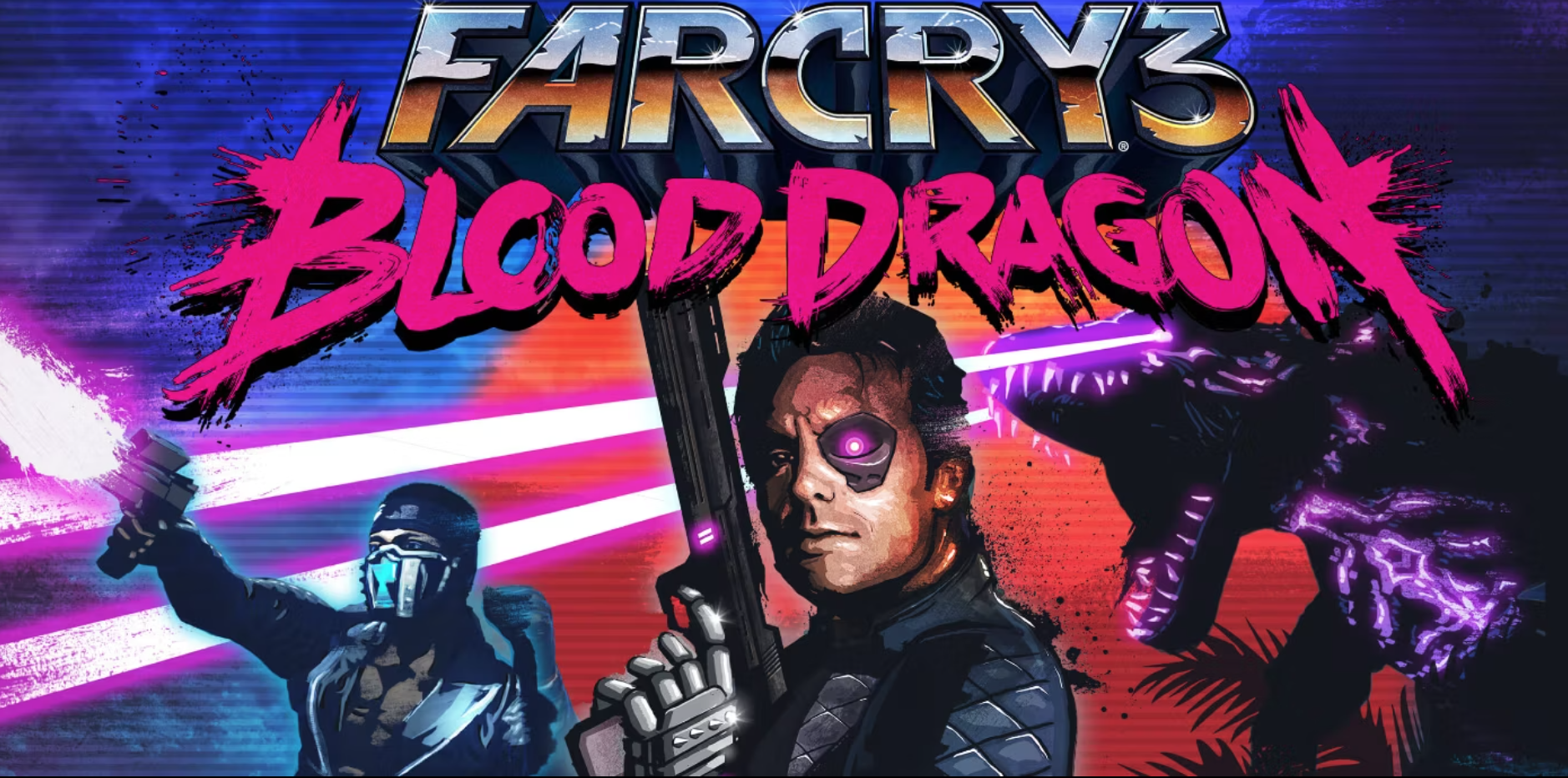Standalone expansions have seen a surprise resurgence in recent years, and their return is more meaningful than most might assume.

SUMMARY
- Standalone expansions provide triple-A developers with a low-risk, cost-effective means of exploring new ideas and testing the waters for the future direction of their franchises.
- While standalone expansions may not always match the quality of their full-length counterparts, they offer a refreshing change of pace from bloated, filler-heavy games that dominate the market.
- The creativity and innovation of standalone expansions have the potential to push long-running franchises in exciting new directions, offering unique and memorable experiences for players.
In the modern gaming industry, most triple-A developers aim to impress players with video games that provide enough content to last for hundreds of hours. While this goal has served as the basis for countless bestsellers, it’s also proven costly for many studios. The ever-increasing size and standards for current-gen titles have led to rapidly growing budgets and development teams with each new release. For popular franchises like The Legend of Zelda and Grand Theft Auto, this isn’t a problem thanks to their practically guaranteed success. However, plenty of new and long-running series still find themselves struggling to retain their popularity and profitability under the intense demands of the gaming market. But rather than continuing to put out bigger and riskier titles against declining sales, some developers are starting to scale back on the scope of their new releases.
While triple-A studios are commonly associated with lengthy, full-priced games, more developers are starting to recognize the value of smaller-scale, lower-budget releases. Recent examples include Assassin’s Creed Mirage and Like a Dragon Gaiden: The Man Who Erased His Name, both of which strayed from their respective franchise’s reputation for content-packed open worlds by delivering shorter experiences at a lower price. These budget entries in major series are often referred to as “standalone expansions.” Much like traditional game expansions, they use the mechanics and framework of a preexisting game to deliver new experiences but are distinct enough to earn a separate release. Standalone expansions aren’t a new concept for triple-A studios, but their increasing prominence in the modern gaming landscape not only reflects their creative potential but also highlights the growing fatigue towards the industry’s current trends.
The Many Purposes For Standalone Expansions
In an industry that prioritizes massive, full-priced releases over all else, it’s rare for triple-A studios to release games that are both shorter and cheaper than most other titles. However, there’s a multitude of reasons for companies to start relying on smaller projects like standalone expansions. Compared to the average modern video game, most standalone expansions don’t require the massive budgets or multi-year development cycles that have become a regular part of the gaming industry. Not only does this mean standalone expansions are typically easier, quicker, and cheaper to develop, but they also represent a much smaller risk for the studio. A standalone expansion that fails to meet sales expectations can be disappointing for its creators, but it’s nothing compared to the severe losses that result from a full-fledged release becoming a commercial flop. Because of this, it’s easy to see why even the largest game studios are willing to give standalone expansions a chance.
Some standalone expansions are used as an easy way to fill gaps in a publisher’s release schedule. Assassin’s Creed Rogue, for example, was solely created to ensure that seventh-gen players would receive a new annual entry while Ubisoft focused on the franchise’s first eighth-gen exclusive, Assassin’s Creed Unity. While Rogue still turned out to be an enjoyable game for fans of the series, many players viewed it as a glorified expansion to Assassin’s Creed IV rather than a proper new entry. Similarly, Bungie’s Halo 3: ODST was originally conceived as a short mini-campaign to entertain fans while they waited for Halo Reach. However, ODST was eventually expanded into a full-length package and even introduced the fan-favorite firefight mode.
Like ODST, most standalone expansions start out as smaller projects before being reworked into larger releases. Recent examples such as Like a Dragon Gaiden and Assassin’s Creed Mirage were both planned to be downloadable content for other games until their developers decided to expand their unique concepts into budget titles. The purpose of these games isn’t to be advancements of their respective franchises, but rather to deliver experiences that provide a fresh spin on what fans love about each series.
Standalone expansions like Spider-Man: Miles Morales and Uncharted: The Lost Legacy present new stories starring characters who were previously relegated to supporting roles in prior games. Likewise, Like a Dragon Gaiden shows events that unfolded between the series’ mainline titles and leads into the story of the upcoming Like a Dragon: Infinite Wealth. Some standalone expansions take these creative possibilities for storytelling and gameplay even further by adapting their series’ formula to completely different settings and genres, with Ubisoft’s Far Cry 3: Blood Dragon and Far Cry Primal being some of the best examples of how outlandish or inventive these games can become.
Although they are often dismissed by consumers for being cheaper and shorter than most other games, standalone expansions are a valuable way for major franchises to experiment with unconventional ideas without needing the time or resources of a traditional mainline entry. However, despite the many advantages to the growing popularity of standalone expansions, there are also a few downsides to these lower-budget games becoming an industry standard.
The Downsides Of Standalone Expansions

Although the lower budget and faster development cycles of most standalone expansions seem like a positive for both developers and consumers, this rushed production can also negatively impact a game’s quality. In some cases, this leads to unpolished releases such as Red Dead Redemption: Undead Nightmare, which still contains multiple game-breaking bugs. Other games like Far Cry Primal and Dishonored: Death of the Outsider were criticized for their simplified mechanics, underwhelming stories, and overall disappointing gameplay that failed to meet the high expectations set by their predecessors. Even Like a Dragon Gaiden, which recently impressed players with its satisfying combat and emotional writing, suffered from boring side quests that never came close to the quality of the substories from past entries. While Gaiden is still commendable for delivering an immensely enjoyable experience despite reportedly being developed in only six months, its shortcomings only prove that standalone expansions aren’t ideal for every series.
Despite the many flaws that often appear in standalone expansions, each of these games at least provides an enjoyable experience that wouldn’t be possible in a mainline title. However, some standalone expansions show that some concepts don’t belong in this condensed format. One of the most infamous examples is Konami’s Metal Gear Solid V: Ground Zeroes. Originally intended to be a prologue mission included at the beginning of Metal Gear Solid V: The Phantom Pain, Ground Zeroes became a standalone release after it became clear that development on The Phantom Pain was still far from finished. Unfortunately, the absurdly brief campaign of Ground Zeroes did not justify its $30 (initially $40) price tag and left fans disappointed despite the impressive quality of what little content it included.
Capcom’s Resident Evil 3 (2020) was also heavily criticized for a similar misuse of the standalone expansion format. But whereas Ground Zeroes didn’t provide enough content to justify its individual release, Resident Evil 3 was a victim of the opposite issue. Although it was advertised as a full-length game, Resident Evil 3 mainly uses the framework of Resident Evil 2 (2019) to deliver an overly simplified experience. The Resident Evil 3 remake failed to provide a faithful update to the 1999 survival horror classic, instead cutting out numerous iconic locations and major features (the multiple story routes and randomized items are notably absent) from the original game, as well as streamlining its campaign to be even more linear than its already-straightforward source material. Perhaps the remake’s greatest offense was reducing the original’s intimidating antagonist, Nemesis, to brief appearances in a few scripted set pieces.
Both Resident Evil 3 and Ground Zeroes can be appreciated for what they offer, but they also prove that not every concept works as a standalone expansion. Ground Zeroes was a masterful showcase of the stunning visuals and unmatched depth that would be further improved in The Phantom Pain. But even with the optional objectives and additional challenges it includes, Ground Zeroes still feels like an overpriced demo rather than anything deserving of a standalone release. Likewise, Resident Evil 3 could have been an unforgettable horror remake that brought the terrifying chases of the original game to modern audiences, but its over-reliance on the foundation set by Resident Evil 2 along with its heavily condensed campaign left fans disappointed over its wasted potential.
Why Standalone Expansions Are Important For The Gaming Industry

Few standalone expansions are ever as good as their full-length counterparts, but even the worst of these games can improve their respective series for the better. Just as standalone expansions create opportunities for developers to experiment with new ideas, they can also serve as testing grounds for game concepts that might influence the future of a franchise. Resident Evil 3 may have failed as a remake, but the game proved that the series could strike a satisfying balance between action and horror. Its success would later inspire the action-horror gameplay of Resident Evil Village and Resident Evil 4 (2023).
More recently, Assassin’s Creed Mirage returned the series to its stealth-based roots after the last few games adopted an open-world RPG format. However, Mirage‘s release as a standalone expansion also serves as a low-risk means for Ubisoft to test whether the series’ classic formula will still appeal to fans. After the critical and commercial success of Mirage, it’s likely that future full-priced Assassin’s Creed games will follow in its example and adopt the series’ original stealth-oriented gameplay. Even short experiences like Ground Zeroes or the demo for Like a Dragon: Infinite Wealth that’s included with Like a Dragon Gaiden can have a similar effect by providing a chance for developers to take lessons from early fan feedback and apply it to their upcoming projects.
Standalone expansions offer short and sweet gaming experiences from triple-A developers, which are becoming increasingly rare with each passing console generation. With so many modern titles being bloated with tedious filler and overused game mechanics, the focused and often experimental design of standalone expansions offers a refreshing change of pace. Moreover, the creativity and innovation of these titles has the potential to push long-running franchises into exciting new directions. Countless standalone expansions have proven the value of these smaller experiences, with some of the most notable examples including The Last of Us: Left Behind, Grand Theft Auto: Episodes from Liberty City, and Half-Life 2: Episode 1 and Episode 2. While there are still some causes for concern surrounding their growing popularity, having more standalone expansions will ultimately benefit the gaming industry as a whole.








